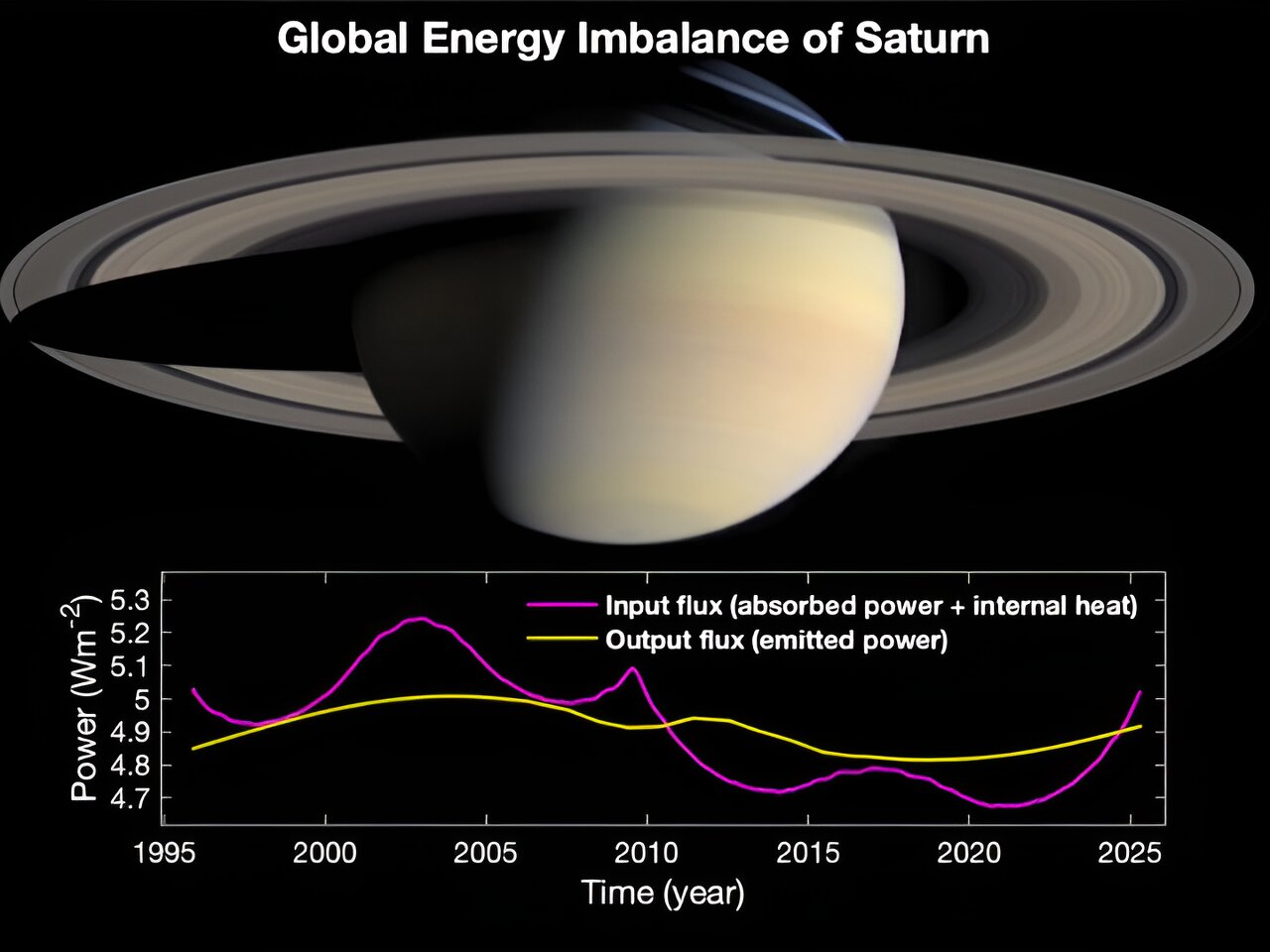Discovery of a significant energy imbalance on Saturn
Follow us on Google News (click on ☆)

Energy imbalance on Saturn.
Credit: NASA/JPL
Observed for the first time on a seasonal scale, this global energy imbalance on a gas giant has intrigued researchers. According to Liming Li, a professor of physics, this discovery alters our understanding of planet formation and atmospheric sciences. Utilizing data from the Cassini mission, doctoral student Xinyue Wang revealed this significant seasonal variation in Saturn's energy.
Unlike Earth, gas giants receive not only solar energy but also deep internal heat, which influences their thermal structure and climate. Saturn's energy imbalance results from its eccentric orbit, varying by 20% between aphelion and perihelion, leading to significant seasonal variations.
Earth, with its nearly circular orbit, does not experience such an imbalance. Xun Jiang, a professor of atmospheric sciences, explains that Earth's energy balance is mainly determined by absorbed solar energy and emitted heat, whereas Saturn's internal heat plays a crucial role.
Cassini data suggests that this energy imbalance contributes to the development of giant storms on Saturn, a dominant weather phenomenon on the planet. This discovery may also provide clues for understanding Earth's climate.
The Cassini mission, a collaboration between NASA, the European Space Agency, and the Italian Space Agency, explored Saturn for nearly 20 years. Professor Li, as a participating scientist, monitored three onboard instruments observing Saturn's energy balance.
UH researchers, along with scientists from various institutions, conducted this study under the guidance of Professors Li and Jiang. Their discovery prompts a reevaluation of current models of gas giant atmospheres and climates, stressing the importance of this seasonal imbalance.
Finally, Li's team is preparing to explore other gas giants, notably Uranus, where a flagship mission is planned for the next decade. They predict an even more pronounced energy imbalance on Uranus due to its orbital eccentricity and high obliquity.